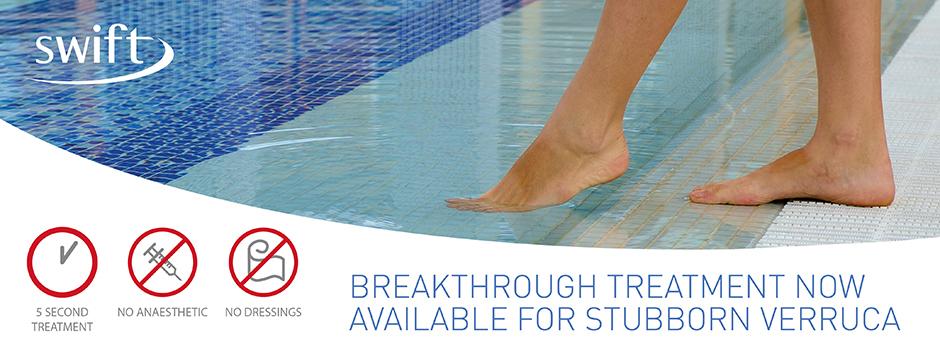Verruca treatment
A verruca is simply a wart found predominantly on the sole of the foot, however they can also appear around the toes. They are caused by the Human Papilloma Virus (HPV), which enters the body through tiny cuts or abrasions normally on the bottom of the foot. The virus is very contagious and thrives in warm moist conditions such as the surrounding areas of swimming pools, changing rooms and bathrooms. The virus can also be passed on through towels.
Normally antibodies in the blood can destroy the HPV, but in some cases it takes refuge in the skin and causes a verruca. Pressure from walking or standing often causes them to grow deep into the layers of the skin.
Signs and Symptoms
They can appear as slightly raised lesions. They may become rough and bumpy, distinguished by their cauliflower-like appearance. Most are grey or brown with dark pinpoints. These pinpoints are tiny capillaries that supply blood to the verruca.
The visible part of the verruca on the surface of the skin is a small part of the anomaly. Often the part of the verruca beneath the skin is much larger than the visible area.
Patients sometimes feel a ‘lump’ similar to having a stone in the shoe. This can cause discomfort especially if the verruca is in a weight-bearing or pressure area.
If left untreated, verrucas can grow up to 1 inch in diameter. They may become surrounded by smaller clusters, these are known as ‘mosaic verrucas’.
If you get a verruca you should take steps to prevent it from spreading to others. Use separate towels for drying affected feet and wear flip-flops when swimming and in changing areas. If untreated, verrucas can persist for an extremely long time.
There are many over-the-counter medications available for self-treatment, however if you have circulatory problems or diabetes these should not be used and a registered Chiropodist should be consulted.
Treatments
- Swift Microwave Therapy – Swift allows the treatment area to be highly targeted and the skin surface is not broken or affected. The procedure is simple, clean and safe, and only takes a matter of seconds. Healing begins immediately.
- Cryotherapy – This involves freezing warts with liquid nitrogen or nitrous oxide gas. This needs to be repeated every 2-3 weeks over a period of time, however this is difficult to determine because it is dependant upon the size of the verruca and the length of time it has been present.
- Excision Surgery – This involves the paring down of the verruca using a scalpel and a mild acid (e.g. Salicylic acid) is applied topically. This treatment requires multiple applications, again over an undetermined period of time, and results in the disintegration of viral cells, allowing healthy cells to replace them.

